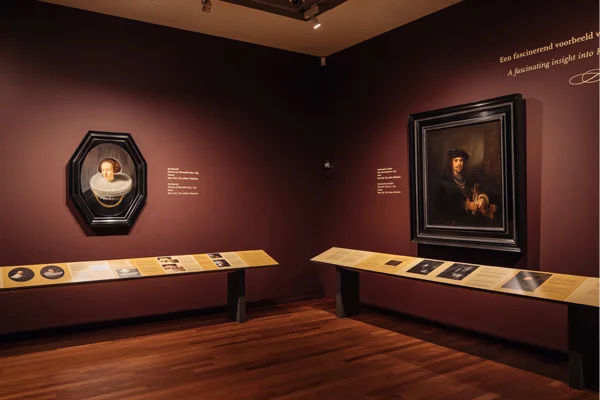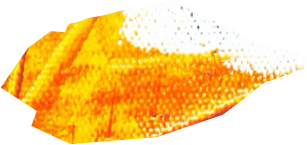Two newly rediscovered paintings begin a special visit to The Rembrandt House Museum on May 9th. Rembrandt’s Portrait of Petronella Buys (1635) and Man with a Sword (c. 1640-44), painted by Rembrandt and a member of his workshop, have not been on public view in decades.
The two works were recently acquired by the New York collectors Thomas S. Kaplan and Daphne Recanati Kaplan, the founders of The Leiden Collection, which is one of the largest private collections of seventeenth-century Dutch art in the world. The rediscovery of these two paintings and their presentation in the Rembrandt House Museum reveal a fascinating story about the history of Rembrandt attribution and the importance of continuing research and technical investigation.
Two newly rediscovered paintings begin a special visit to The Rembrandt House Museum on May 9th. Rembrandt’s Portrait of Petronella Buys (1635) and Man with a Sword (c. 1640-44), painted by Rembrandt and a member of his workshop, have not been on public view in decades.
The two works were recently acquired by the New York collectors Thomas S. Kaplan and Daphne Recanati Kaplan, the founders of The Leiden Collection, which is one of the largest private collections of seventeenth-century Dutch art in the world. The rediscovery of these two paintings and their presentation in the Rembrandt House Museum reveal a fascinating story about the history of Rembrandt attribution and the importance of continuing research and technical investigation.
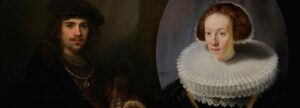
(left) | Rembrandt and Workshop, Man with a Sword, c. 1640-44.
Canvas, 102.3 x 88.5 cm, New York, The Leiden Collection
Man with a Sword was long regarded as a painting by Rembrandt with an excellent provenance, until scholars dismissed the attribution in 1970 and even suggested that the painting might be an eighteenth-century imitation. Recent research has revealed that Rembrandt both originally conceived of and painted the portrait, but that it was subsequently subjected to a drastic transformation by one of his pupils in his workshop. The result is the fantasy tronie that we see today. While a pupil overpainted much of the underlying portrait, Rembrandt’s hand is clearly visible in the rendering of the face, which has remained untouched and is characteristic of his work in the early 1640s.
(right) | Rembrandt, Portrait of Petronella Buys 1635.
Panel, 79.5 x 56.3 cm, New York, The Leiden Collection
Portrait of Petronella Buys surfaced on the art market in 2017, following decades of its whereabouts being unknown. The portrait was painted in 1635, a busy time for Rembrandt. Although it bears his signature and is known to be the pendant of a fully attributed painting of her husband, Philip Lucasz (National Gallery, London), in 1989 the Rembrandt Research Project suggested that it was probably painted by an assistant. New research has led us to think differently. Rembrandt painted the work himself, but rather more loosely and swiftly than we are used to seeing. Perhaps he was adhering to a schedule: Petronella left for Batavia on 2 May 1635, leaving Rembrandt a short window to complete the portrait before the couple’s departure.
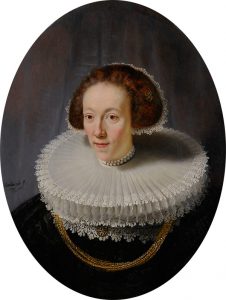
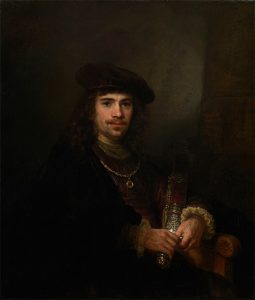
This exhibition is the second time in a relatively short period that The Leiden Collection has presented part of its collection in The Rembrandt House Museum. At the end of 2016, the spectacular discovery of a supposedly lost Rembrandt—one of his earliest works—led to the popular focus exhibition of Rembrandt’s First Painting: The Four Senses. This time around, The Rembrandt House Museum hosts the European premiere.
‘We are delighted to be the first to show these rediscovered paintings to European museum visitors. This is entirely in accordance with the position the museum has acquired over the preceding decades as the place where discoveries and research results relating to Rembrandt, his pupils and artists from his surroundings are presented. It is fantastic to have such treasures from The Leiden Collection here again.’
– Lidewij de Koekkoek, Director, The Rembrandt House Museum
The Portrait of Petronella Buys and the Man with a Sword will be displayed together with photographs and other relevant sources that bring to life the fascinating stories behind the works— from doubt and rediscovery to new research and attribution. The two paintings have not been in the Netherlands for around a century, and in the spring of 2019 they will travel on to the Louvre Abu Dhabi for the wide-ranging exhibition of The Leiden Collection.
The presentation Special Guests is on view in The Rembrandt House Museum until 2 September 2018. Update: The paintings will move on 4 September 2018 to the living room of Rembrandt’s former residence – the present-day museum – where they will remain on view until mid-January 2019. They will then depart for the Louvre in Abu Dhabi for an overview exhibition of The Leiden Collection.
The Leiden Collection
The Leiden Collection, founded in 2003 by Dr. Thomas S. Kaplan and his wife Daphne Recanati Kaplan, includes approximately 250 paintings and drawings. It represents the largest and one of the most significant private collections of 17th-century Dutch paintings in the world. Previously anonymous in its lending, the Collection was introduced to the public for the first time in 2017 through a special exhibition at the Louvre, and is presently on a world tour.
The Rembrandt House Museum
Between 1639 and 1658, Rembrandt lived and worked in this magnificent house, which is now a museum. An inventory drawn up in that period was used as the source for restoring the house with seventeenth-century furniture, art and objects. The Rembrandt House stages daily demonstrations of etching and paint-making, showing how the artist worked. The Rembrandt House Museum holds almost the complete collection of Rembrandt’s etchings, and mounts temporary exhibitions of the work of Rembrandt, his contemporaries and later artists in the modern museum wing.
